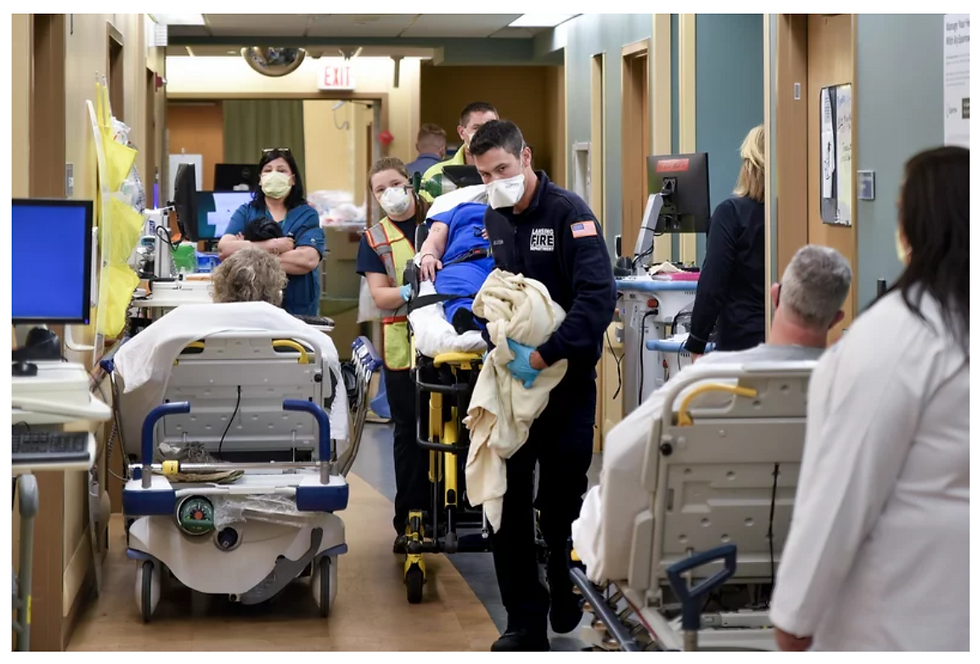Wound Programs Evolving
- katherinepiette
- Oct 29, 2020
- 3 min read

Driven by the new PDGM reimbursement, Wound Care Programs are fast evolving for Home Health organizations. It’s no longer enough to define your Wound Program by activating the Wound Module in the EHR. Although Wound Modules may offer advantages to your nurse teams, it’s the rest of the Wound solution that you need to consider for your organization.
In our experience working with Home Health Agencies throughout the country, wound patients comprise as much as 40% of the agency’s census. Compounding this problem is the fact that there is an increase in underlying medical conditions such as Diabetes, obesity, etc. which contribute significantly to the formation of chronic wounds.
Consider 6 Tips to build a recognizable and defensible Wound Program:
Offer Nurse Training...Often. Wound Care is complex and requires extensive education and practical experience. Although many nurses may have a few hours of Wound Care education in their background, the stream of patients coming into Home Health Care requires significant knowledge. It is necessary to invest, and then re-invest in nurse preparedness for wound patients.
Review Best Practices for Care Plan Development. Getting it right from the beginning is critical to providing optimal Wound Care. Not only does the home health clinician have limited time with the patient, but positive outcomes for Wounds in Home Health Care are difficult to achieve for many reasons. Standardized wound care assessment and care algorithms based on best practices offer nursing teams clarity in developing the optimal care plans which strengthen an agency’s relationship with referring physicians.
Understand the virtualization of WOCN Support. In the past, Wound & Ostomy Certified Nurses were often utilized to develop care plans, similar to the role of Start of Care Nurses in assessing the needs of a patient. But market forces of the current day, combined with the scarcity of certified Wound Care nurses, have rendered the deployment of these resources to patient’s homes as impractical, inefficient, and costly. The advent of Telehealth allows for new methods in virtualizing the WOCN skillset, replacing old productivity paradigms from 3-4 visits per day to 20-30consults per day.

Implement higher-performing Technology and Imaging for Wounds. Although EHRs may have documentation support, few have embedded up-to-date technologies related to the image processing of a wound. Implementing wound imaging and analysis technology facilitates the flow of information between the field nurse and virtual WOCN teams. Additionally, having objective, longitudinal data about the wound’s progress creates the optimal clinical and financial outcomes in the management of the patient’s wound.
Physician Services. Physicians require reliable information in order to make the best decisions for their patients, but the field of Wound Care is rapidly changing. Ongoing education programs and the ability to offer data related to best practices allows Physicians and Nurses to develop a care plan with confidence that the patient will experience the best outcome possible in the management of their wound.
Formulary Support. Recognizing that Wound Care is a complex, rapidly changing field, Wound Care supply manufacturers have developed an array of specialty dressings and treatment modalities to help agencies care for these wounds. Advanced wound dressings can make all of the difference, in both improved patient outcomes and overall lower cost of care for the wound patient in this era of PDGM reimbursement with its focus on wounds as its own clinical grouping. An advanced dressing that handles heavy exudate can be changed once or twice per week. The days of daily dressing changes are over.
Continuous Quality Improvement. Quality Review occurring months after the delivery of care is no longer acceptable. Learning must be timely, relevant, and iterative with Care Teams. A didactic, objective review of wound metrics to support future decision-making is critical with the increased incidence and focus on wound patients in Home Health Care. Creating a wound dashboard with Key Performance Indicators around measurable clinical and financial outcomes is key to an agency creating and maintaining a Wound Program of Excellence.
Take a moment to review how Corstrata can help.




Comments